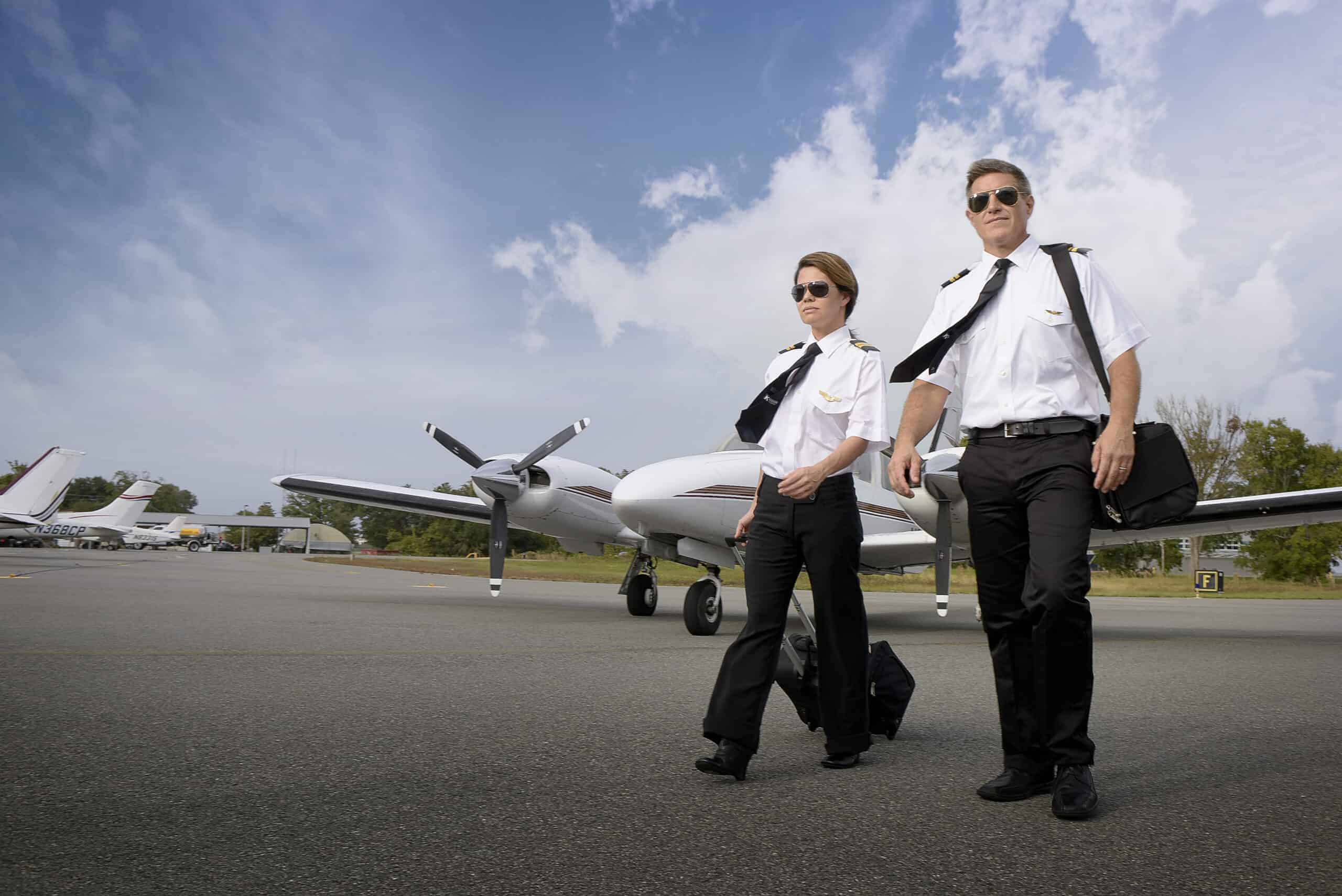
What Is Self-Funded Pilot Training?
Self-funded pilot training refers to programs where students cover their own tuition costs through personal savings, loans, or structured payment plans. Unlike military pathways—where the government covers all expenses in exchange for service—or airline-sponsored programs offering free training in return for a job commitment, self-funded programs require students to pay all training and associated fees out-of-pocket.
Typical Training Process Includes:
-
Private Pilot License (PPL)
-
Instrument Rating (IR)
-
Commercial Pilot License (CPL)
-
Certified Flight Instructor (CFI)
-
Airline Transport Pilot License (ATPL)
This comprehensive structure ensures that graduates meet the minimum flight hours and are fully prepared to work in commercial aviation, corporate aviation, or charter services.
Types of Flight Training Institutions
Students can choose from the following:
-
Local Flight Schools – Flexible schedules, close-knit learning environments
-
University Aviation Programs – Combine academic degrees with pilot training
-
Specialized Aviation Academies – Accelerated, career-focused training paths tailored for airline jobs
Each option has its pros and cons, depending on your budget, learning preferences, and career goals.
Training Costs
Pilot training costs vary based on the type of program:
-
Basic commercial pilot training: $80,000 – $150,000
-
Full programs including ATPL: $150,000 – $220,000+
Major expenses include:
-
Aircraft rental and fuel
-
Instructor fees
-
Ground school tuition
-
Equipment (headset, uniforms, tablet)
-
Written and practical exam fees
-
Medical certificate and background checks
Location also affects costs—schools in major metro areas tend to be more expensive due to higher overhead, while rural schools may offer lower rates but have fewer flight condition variations.
Unplanned factors like bad weather, aircraft maintenance, or slower student progress can also increase overall costs—so having a financial buffer is recommended.
Fully or Partially Sponsored Programs by Airlines
1. United Aviate Academy
Based in Phoenix, this academy trains pilots for United Airlines. Tuition is around $89,000, but scholarships from organizations like OBAP and Sisters of the Skies can provide significant support. Students receive mentorship, travel benefits, and hiring priority at United.
2. SkyWest Pilot Pathway Program
SkyWest partners with schools like ATP Flight School to provide up to $17,500 in tuition support, seniority perks, electronic logbooks, and guaranteed interviews for First Officer positions after logging 1,000–1,500 flight hours.
3. ATP Flight School
ATP offers financing options for airline-style training programs. Their accelerated format and structured career path prepare students to enter the regional airline workforce quickly.
Integrated vs. Modular Training
Integrated Training
Full-time, from no experience to CPL/ATPL.
Benefits:
-
Clearly defined timeline
-
Consistent learning pace
-
Often preferred by airlines
Modular Training
Step-by-step training, offering schedule flexibility. Ideal for those working or with family obligations, but:
-
Takes longer to complete
-
May require skill refreshers
-
Can end up more expensive overall
Financing Your Training
Because federal student aid rarely applies to private flight schools, students often consider:
-
Private aviation loans – Flexible terms tailored for flight students
-
Personal savings and family support
-
Home equity loans – Consider carefully before choosing this route
-
Income Share Agreements (ISAs) – Pay a percentage of future income instead of upfront tuition
-
GI Bill benefits – Available for military veterans
-
Part-time work – Many students work while training to help cover expenses
Choosing the Right Flight School
When selecting a training program, consider:
-
FAA certification and approvals
-
Instructor quality and student-to-instructor ratio
-
Aircraft quality and cockpit technology
-
Safety and maintenance records
-
Graduate employment rates
-
Geographic location – Stable weather and complex airspace help with experience-building
Career Outlook and Salary Expectations
Professional pilots enjoy strong earning potential:
-
Regional airline first officers: $40,000–$80,000/year to start
-
Major airline captains: $200,000–$300,000+/year, including overtime and international routes
-
Corporate pilots: $60,000–$150,000 with a more stable schedule
-
Cargo and charter pilots: Competitive pay with diverse work environments
Career paths often begin with jobs as flight instructors or charter pilots, followed by regional airlines, and eventually major carriers. There are also opportunities in aviation management, training, and entrepreneurship.
Alternative Paths to Becoming a Pilot
-
Military training – High-quality, free training in exchange for service commitment. Excellent career prospects post-service.
-
Airline-sponsored programs – Fully covered costs with a work contract.
-
University aviation programs – Combine a college degree with pilot training, potentially qualifying for federal student loans.
-
Flight instruction jobs – Earn money while building flight hours toward higher licenses.
Final Thoughts
Investing in pilot training is a major financial and personal commitment. It requires strategic planning and financial preparation. However, with the aviation industry growing rapidly, those who are dedicated and well-trained can look forward to substantial rewards—not just in income, but in living a life among the clouds.
